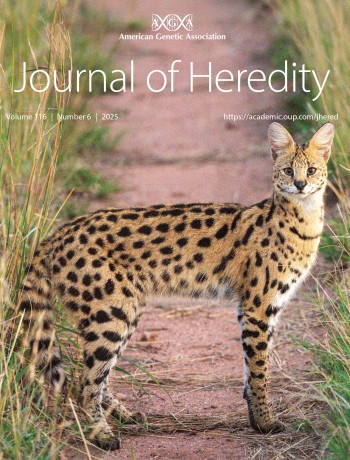Note -- If you want to write about a JHered article, email agablogposts@theaga.org to access the list of papers already assigned
First, read About the Blog ; next, read below & complete your post; finally, upload to Blog Checklist & Upload
Please read and follow the instructions below before submitting your post – this helps reduce post-submission editing and makes the Social Media Editor much happier!
● Prepare text as a Word or PDF document.
● Use color highlighting to note citations, social media handles, hyperlinks, and the matching article references and links at the end.
● Prepare photos and figures as separate JPEGs, each with captions and copyright information. Each file must be less than 10MB.
● Label each file clearly, such as ‘Lastname_Firstname_text; ‘Lastname_Firstname_Fig1; Lastname_Firstname_myphoto; etc.
● Notify Miranda at mirandajwade@gmail.com once you have uploaded your files at the Blog post checklist
● If you receive track changes from Miranda – accept any and all before returning your final post.
Formatting: Items in bold should be used as subheadings in your post
Blog Post Title
If your post is in a particular category, include it (e.g., “Behind the Science: Rest of My Title”).
About the Blog Author
Write a brief caption about yourself, including your current role (e.g., PhD student), your research interests, and if available, your website and social media handle(s). Include a photo of you.
EXAMPLE: Dr. Stacy Krueger-Hadfield is an evolutionary ecologist and assistant professor of biology at the University of Alabama at Birmingham. She works on life cycle and reproductive system evolution in algae and invertebrates. Follow Stacy on Twitter @quooddy or via her lab’s website.
Blog text
Insert text here for your blog post – do not add figures to word document – upload them separately
EXAMPLE: Most eukaryotes are not limited to sex. Instead, they often alternate between sexual and asexual reproduction (= clonality). Partial clonality has profound
Dr. Stacy Krueger-Hadfield
University of Alabama at Birmingham
impacts on species’ ecological success and their ability to evolve in response to environmental change (Orive et al. 2017).
...
References
Add references here that you cite in your text. Add their web addresses with all other links, below. Refs should be in alphabetical order in this format:
Orive ME, Barfield M, Fernandez C, Hold RD (2017) Effects of clonal reproduction on evolutionary rescue. The American Naturalist. 190. 469-490.
Figure legends
Provide figure captions here and name your figures (Lastname_Firstname_Fig1, Lastname_Firstname_Fig2a, etc.)
Hyperlinks:
Add all hyperlinks as shown in the examples below, including links for referenced
articles:
Stacy Krueger-Hadfield lab website: http://www.quooddy.com/
UAB link: https://www.uab.edu/cas/biology/people/faculty/stacy-a-krueger-hadfield
@quooddy link: https://twitter.com/quooddy
Orive et al. 2017: https://www.journals.uchicago.edu/doi/full/10.1086/693006
Use whole links for references, not just the digital object identifier (DOI). This is not a link: 10.1093/jhered/esab019. This is a link: https://doi.org/10.1093/jhered/esab019

Check out our truely facinating Editor's Choice article by Kelleher et al., examining radiation tollerance, while our cover this issue is courtesy of Harris et al., who lay out the best assembly yet of the Serval - and also the domestic cat!

Read all about it here
Apply now for an AGA
Any questions? Contact the Managing Editor at theaga@theaga.org.